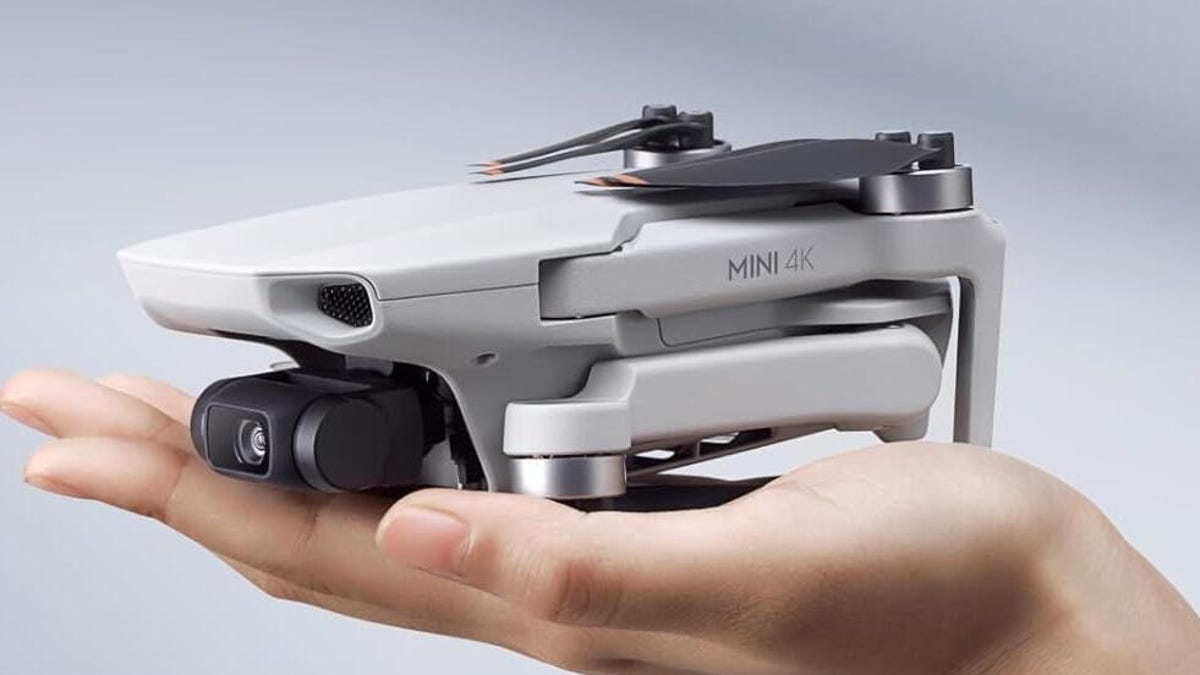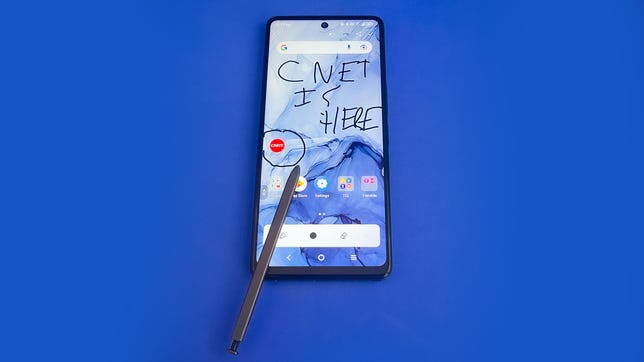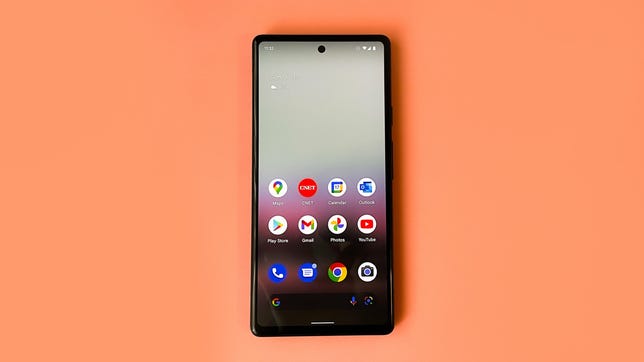Technologies
Best Phones Under $300: 5G Phones at Starter Prices
These phones prioritize essential features while providing a few productivity perks.

The best phones under $300 offer a taste of premium features, but in a device that still very much feels like a budget phone. That’s not a bad thing: These phones can make calls, send texts and run most apps and games for hundreds of dollars less than the iPhone 14 or Galaxy S23. They also provide access to 5G, which is important if you want to hold onto your device for a while, and some even come with a built-in stylus.
But I’m going to level with you: We have yet to use a phone in the $200 to $300 price range that feels like an excellent value. The absolute best picks in this category tend to be more expensive devices that are frequently discounted to $299 when on sale. For instance, Google’s $449 Pixel 6A is our current best phone for under $500, and it’s often discounted to $299.
That’s not to say phones in the $200 to $300 price range should be avoided. Some include decent cameras, a headphone jack, expandable storage and NFC support for mobile payments.
What are the tradeoffs with phones that cost $300 or less?
These cheaper devices tend to scale back significantly in one area or another in order to achieve those low prices. Most commonly, these drawbacks include limited software support, carrier support or bloatware (preloaded apps that you never asked for). These tradeoffs often mean that these devices should not be used after two to three years, especially after security update support ends.
It’s also notable that while these phones retail for $200 to $300, many of them are often available at a deep discount — or even for free — as part of a carrier subsidy deal. If you are planning to stick with the same wireless carrier for two years, these phones could just become part of the cost of your service.
Best phones under $300
Eli Blumenthal/CNET
The $299 OnePlus N20 5G isn’t an exciting phone, but it more than gets the job done for most situations. Unlike several phones on this list, you can buy it unlocked from OnePlus. It also provides high-end features we don’t always see at this price, like an in-screen fingerprint reader, faster 33W charging, 6GB of RAM and NFC for mobile payments. Despite being available directly from OnePlus, the N20 works with AT&T and T-Mobile but does not work with Verizon. The phone’s 5G support also only works through T-Mobile.
In his OnePlus N20 review, CNET Senior Editor Eli Blumenthal found the phone’s 64-megapixel main camera, 2-megapixel macro camera and 2-megapixel monochrome lens to take decent photos during the daytime. But its cameras struggle in the evening, which is a common issue on cheaper phones. The N20 also includes a 16-megapixel front-facing camera located in the top left of the phone’s display.
The phone is also only getting one major software update from Android 11 to Android 12, but will receive three years of security updates. As a result, despite the phone’s decent specs and slightly wider availability, it only makes sense to hang onto this phone for two to three years.
Mike Sorrentino/CNET
Reviewing the $258 TCL Stylus 5G was a journey for me last year. Specs-wise, it has a lot that I enjoyed. The phone’s TCL NxtVision HDR setting provided enhanced colors when I played games, TCL made minimal changes to Android 12 and I especially enjoyed the magnetic stylus that fits securely into its own slot on the phone.
However, the big reason why my review took four months is because of repetitive software bugs that make the phone otherwise tough to recommend. I experienced frequent restarts while using the phone and Bluetooth connectivity issues, the latter of which was eventually fixed through a software update. This phone is also locked to T-Mobile completely, so it can’t be used on other carriers and is filled with T-Mobile apps that are challenging to remove.
Yet if you absolutely must have a stylus and your budget is under $300, this is one of the better overall picks. But be wary of software issues, and remember the phone is only getting one major software update along with two years of security updates.
Mike Sorrentino/CNET
The $228 OnePlus Nord N300 5G is my favorite phone under $300. The only reason why I cannot recommend it above the N20 is because this phone is locked to T-Mobile. Despite being around $80 cheaper than the other OnePlus phone, it still has 33-watt fast charging, a 90Hz refresh rate display and a 48-megapixel main camera that does a decent job with photos and video. Its matte black look that highlights its two camera lenses also makes it one of the nicer-looking budget phones I’ve tested. The N300 improves on the N20 with its dual stereo speakers, over the single speaker on the N20, and I personally prefer the side fingerprint sensor over in-screen options like on the N20.
But apart from the availability issue, the N300 also suffers from a short software support timeline. The N300 will only get one major software update from Android 12 to Android 13 and two years of security updates. Even though that’s somewhat normal for the category, I still consider it a major drawback. There’s also a dose of T-Mobile bloatware, but at this price it’s easier to swallow.
If you are shopping specifically for a phone that works with T-Mobile or its Metro brand, the $228 OnePlus Nord N300 is definitely a solid choice. Just recognize you cannot take the phone to other carriers, and it won’t be a great option after two years of use.
Jessica Fierro/CNET
The Light Phone 2 is a very different kind of phone. It’s meant for people seeking freedom from the constant stream of notifications, but still want a phone that looks nice. But despite its somewhat limited functionality, this phone still costs $299.
The Light Phone 2 supports texts, phone calls, music playback, podcasts, mobile hotspot functionality and limited GPS support for directions on its E Ink screen. It does not have a camera, web browser, email access or other common apps like news or messaging apps.
My colleague Jessica Fierro gave life with the Light Phone 2 a try, and she enjoyed how the phone helped her stay more focused on the world around her. However she found the slower texting speed on the E Ink display to be challenging to adjust to, and could not fully make the switch because for work she needs some degree of social media access in order to stay up on trends.
The absence of many modern features is the entire point of the Light Phone 2. It’s a device for people who intentionally just want essential communications on a screen that’s more like a Kindle’s display than the one you’d find on a Samsung Galaxy device.
The Light Phone 2 is certainly not for everybody, but it could be worth considering for someone who wants their phone to do less. Fans of conventional phones should consider the wealth of feature phones and flip phones that still exist first — which are often free with a carrier deal or available for under $100.
Lisa Eadicicco/CNET
Admittedly I’m cheating by getting this phone into the list, but Google’s Pixel 6A has been discounted to $299 a lot lately and is an easy recommendation when it’s been discounted into a budget phone range.
Regularly $449, the Pixel 6A won our Editors’ Choice Award last year. In her review, CNET Senior Editor Lisa Eadicicco praised the phone for its great camera, Pixel-exclusive features like Magic Eraser, its colorful design and being among the first to get new Android updates.
While it’s likely that Google announces a sequel 7A phone as soon as the next Google I/O development conference, scheduled for May 10, the current Pixel 6A is still an excellent pick for the price if you can get it at its $299 price. But if you see the phone go back to its original $449 price between now and May 10, and you aren’t in dire need of a new device, I would then say wait for the rumored Pixel 7A.
How we test phones
CNET tests phones by using them daily and comparing them with competing phones to assess their value. We consider a variety of factors, such as the phone’s screen, cameras, battery life, software, performance, features and ease of use.
For low-priced phones, we make sure these devices consistently work well when used in a number of situations. This includes many day-to-day activities like reading the news, listening to music, watching videos, texting, playing games and multitasking.
We test phone cameras in a range of environments, taking test photos outdoors in the daytime and nighttime, and indoors in darker settings. We use cameras in active environments, like a concert or a sports game, and with a variety of subjects including people, objects and pets. We also test available camera settings, especially those that are rarer in these price ranges such as Night mode and Portrait mode.
These anecdotal phone experiences are also combined with benchmark tests such as Geekbench performance testing and battery testing. We monitor battery life in two ways: By seeing how much power is typically left after a day of normal usage and by seeing how much battery is depleted during a more intensive hour with the phone. For the latter test, we’ll check how the phone’s battery holds up to a series of video calls, gaming, video streaming and web browsing.
Phones under $300 FAQs
What about Apple’s iPhone?
Apple does not currently sell any iPhone options between $200 and $300. The cheapest new iPhone you can get is the iPhone SE at $429. That iPhone is a great value for its fast processor and great camera, but held back by its dated design that harkens back to the iPhone 6, 7 and 8.
If you don’t mind getting a preowned device and want something with a bigger screen, as of this writing Verizon sells a 64GB iPhone 11 for $275.
You can also get the 2020 version of the iPhone SE as a refurbished model between $200 and $300 on websites like Amazon and Best Buy, but beware of each store’s policies for refurbished devices. Especially make sure the refurbished device includes a warranty for repairs, since without one you may have to pay Apple or another retailer a high price for a screen repair or other accidental damage.
Best phones under $300: OnePlus Nord N20 5G vs. TCL Stylus 5G vs. OnePlus Nord N300 5G vs. Google Pixel 6A
| OnePlus Nord N20 5G | TCL Stylus 5G | OnePlus Nord N300 5G | Google Pixel 6A* | |
|---|---|---|---|---|
| Display size, resolution | 6.43-inch FHD+ AMOLED display | 6.81-inch FHD+ display (1080 x2400 pixels) | 6.56-inch IPS LCD display; 720p resolution; 90Hz refresh rate | 6.1-inch OLED; (1080 x 2400); 60Hz |
| Pixel density | 409ppi | 395ppi | 269ppi | 429 ppi |
| Dimensions (inches) | 6.2 x 2.8 x 0.29 in | 6.67 x 3.01 x 0.35 in | 6.4 x 2.9 x 0.3 in | 6.0 x 2.8 x 0.35 in |
| Dimensions (millimeters) | 159.9 x 73.2 x 7.5 mm | 169.6 x 76.5 x 8.9 mm | 163.8 x 75.1 x 7.99 mm | 152.2 x 7.18 x 8.9 mm |
| Weight (ounces, grams) | 173g or 6.1 oz | 213g or 7.51 oz | 190g or 6.7 oz | 6.3 oz; 178g |
| Mobile software | Android 11 | Android 12 | Andorid 12 | Android 12 |
| Camera | 64-megapixel (main), 2-megapixel (macro), 2-megapixel (monochrome lens) | 50-megapixel (main), 5-megapixel (wide), 2-megapixel (macro), 2-megapixel (depth sensor) | 48-megapixel (main), 2-megapixel (depth lens) | 12.2-megapixel (wide), 12-megapixel ultra wide) |
| Front-facing camera | 16-megapixel | 13-megapixel | 16-megapixel | 8-megapixel |
| Video capture | 1080p/720p at 30 fps | 1080p at 30fps | 1080p/720p at 30 fps | 4K |
| Processor | Qualcomm Snapdragon 695 5G | MediaTek Dimensity 700 5G | MediaTek Dimensity 810 | Google Tensor |
| RAM/Storage | 6GB/128GB | 4GB/128GB | 4GB/64GB | 6GB RAM/128GB storage |
| Expandable storage | Up to 512GB | Up to 2TB | Up to 1TB | None |
| Battery/Charger | 4,500mAh; 33W charging | 4,000mAh; 18W charging | 5,000mAh; 33W charging | 4,410 mAh capacity; 18-watt fast charging (adapter sold separately) |
| Fingerprint sensor | In-screen | Side fingerprint sensor | Side fingerprint sensor | Under display |
| Connector | USB-C | USB-C | USB-C | USB C |
| Headphone jack | Yes | Yes | Yes | None |
| Special features | NFC, Face Unlock, HDR, Screen Flash, Face retouching | Stylus with built-in storage, producitivity software, NxtVision HDR mode | Dual speakers, NFC, Face Unlock, HDR, Portrait, Face retouching | 5G-enabled, 18W fast charging, WiFi 6E, security updates for 5 years, Android OS updates for 3 years, dual SIM, IP67 water resistance |
| Price off-contract (USD) | $299 | $258 | $228 | $449 (*$299 when on sale) |
Technologies
The New Year Will Kick Off With a Supermoon. Here’s When to See It
January’s Wolf Moon will be the final of four consecutive supermoons.

Supermoons tend to come in packs, and Earth has just experienced three of them in a row, dating back to October. The final supermoon of this sequence is happening on Jan. 3, and it also happens to be the first supermoon of 2026. Skygazers will want to catch this one, since the next one won’t occur until next November.
Don’t miss any of our unbiased tech content and lab-based reviews. Add CNET as a preferred Google source.
The moon tends to spend three to four months at a time in perigee, a fancy term that means it’s as close to Earth as its elliptical orbit will allow. During this time, humans refer to full moons as a supermoon. Since the moon is physically closer to Earth than it normally is, a full moon appears brighter and larger in the sky.
The difference can be a moon that is up to 14% bigger and 30% brighter than a micromoon, which occurs when the moon is at apogee, or the furthest point away from Earth. That brightness is the real differentiator, as a supermoon is bright enough to light up your backyard, especially if there is snow on the ground.
The odds of this are pretty good, as it is expected to snow in a few parts of the US between Christmas Day and New Year’s Eve.
To see the moon at its brightest, you’ll want to stay up late on Jan. 2 or wake up very early on Jan. 3. According to The Farmer’s Almanac, January’s supermoon will rise from the eastern horizon and streak across the sky to settle in the west around sunrise. The moon will reach peak illumination at 5:03 a.m. ET. It should still be dark outside for the entire US during this time, so everyone will have a chance to see it.
If you can’t due to weather or other engagements, the Wolf Moon will be over 90% full from Dec. 31 through Jan. 5, which gives you almost a week at near-maximum illumination.
Since the moon is the largest and brightest object in the night sky, you also won’t need any special magnification devices to see it. However, a good pair of binoculars or a telescope makes the moon’s surface details easier to see, and helps photographers take some impressive moon shots.
The full moon in January is commonly called the Wolf Moon, and it’s due to increased activity from wolves during this time. Not only does January mark the beginning of the wolf’s winter mating season, but wolves are also typically more active during the dusk and dawn hours, and dusk happens pretty early in the day, right after the winter solstice. In the old days, this meant that people were much more likely to see a wolf or hear wolves howling during January.
Technologies
The FCC’s Foreign Drone Ban Is Bad News for Anyone Who Wants a DJI Device
The US government is making good on an anticipated ban on the import of foreign-made drones, including those from the world’s top seller.

If a DJI drone was on your list to buy going into 2026, you might want to act quickly. The Federal Communications Commission has made good on an anticipated ban on the import of foreign-made drones, including those made by DJI, the world’s top seller of the flying devices.
The FCC on Monday added uncrewed aircraft systems and their components that are produced in a foreign country to its Covered List, a record of gear and services deemed to «pose an unacceptable risk to the national security of the US.»
According to the FCC’s public notice, that includes but isn’t limited to data transmission devices, flight controllers, sensors and cameras, batteries, motors and other drone components.
Don’t miss any of our unbiased tech content and lab-based reviews. Add CNET as a preferred Google source.
In late October, the agency voted 3-0 to «close loopholes» that allow tech deemed a «national security risk» to be sold in the US. In plain English, the US government cleared the path to give DJI the same treatment it gave Chinese phone-maker Huawei, effectively banning its products from the American market.
In a statement, DJI said it was disappointed by the decision. «While DJI was not singled out, no information has been released regarding what information was used by the Executive Branch in reaching its determination,» a spokesperson said. «Concerns about DJI’s data security have not been grounded in evidence and instead reflect protectionism, contrary to the principles of an open market.»
DJI said it remains committed to the US market and that it’s possible future products could be cleared for launch here at the discretion of the Department of Defense and Department of Homeland Security.
Drones already in the hands of US consumers aren’t impacted: «This action does not affect any previously-purchased drone. Consumers can continue to use any drone they have already lawfully purchased or acquired,» the FCC said in a fact sheet about the change.
In its announcement, the government cited upcoming high-profile events including 2026’s FIFA World Cup and the 2028 Los Angeles Summer Olympics as mass-gathering events that could be put at risk by drones.
«The federal government is taking additional actions to safeguard Americans and restore American airspace sovereignty,» the FCC said.
The FCC has also been considering a separate ban on TP-Link routers, but that was not included in this December update to its Covered List.
DJI asked for a security audit before any ban
In October, DJI told CNET that the FCC appeared to be making its decision «without any evidence of wrongdoing or the right to appeal.»
Adam Welsh, head of global policy at DJI, said the company has repeatedly said it would be open to audit, but that «more than 10 months have now passed with no sign that the process has begun.»
«The US government has every right to strengthen national security measures, but this must go hand in hand with due process, fairness, and transparency,» Welsh said at the time.
Will DJI drone owners need to give them up?
Because the ban applies to new sales, not drones that have already been sold, a DJI drone you already own is still be legal to use — at least under current rules.
Government agencies, however, were already prohibited from purchasing or using drones from Chinese companies, including DJI.
DJI’s drones consistently rank high in their product category. In January, they dominated CNET’s list of best drones for 2025. But some of the company’s newest products, such as the DJI Mavic 4 Pro, haven’t been available for sale in the United States.
Even before the policy change, some DJI products were hard to find. The website UAV Coach has posted a guide to the bans and reports that, due to inventory issues, most DJI drone models were sold out at retailers.
Technologies
AT&T Just Revealed Which Holiday Has the Most Calls. And No, It’s Not Christmas.
You might be able to guess the biggest texting day of the year, but the Holiday with the most phone calls gave me chills.

The holidays are a time for connecting with friends and family, either by gathering in person or checking in remotely. So, naturally, you might think phone calls would be at their highest during the festive stretch at the end of the year. But according to new figures shared with CNET by AT&T, another holiday got the highest number of calls in 2025. Which one?
The answer might give you chills: AT&T’s subscribers conjured up around 651 million phone calls on… Halloween. The company shared no other data besides the massive number, leading me to wonder why the spooky season inspired so many calls. Lost trick-or-treaters calling their parents for rides? People in costumes at parties accidentally butt-dialing their friends? Poltergeists pilfering people’s phones? Only the spirits truly know.
Despite that one-day call volume, texting is vastly more popular than phone calls over the course of the year. Through Dec. 9, 2025, the network registered almost three times more texts than calls: 525 billion texts sent vs. 181 billion calls made during the year.
And the top texting day? Dec. 1, 2025, with around 2.3 billion (specifically 2,264,041,461) messages sent.
These figures represent traffic on AT&T’s mobile network, which does not include its home or business broadband services. And, of course, it’s a snapshot of just one provider. AT&T has around 119 million subscribers, according to Wikipedia.
When you’re looking at phone plans, even unlimited phone plans, using tens of gigabytes of data during a month sounds like a lot. But at the network level, the scale is staggering, even in limited areas.
For example, AT&T also broke out its three largest data events in 2025: Mardi Gras (March 4) logged 57.5 terabytes; South-by-Southwest (SXSW) (March 7 to 15) went through 34.1 terabytes; and the Formula 1 Miami Grand Prix (May 4) burned 24 terabytes. (One terabyte is roughly equal to 1,000 gigabytes.)
Overall, across all of AT&T’s networks — mobile, broadband and enterprise — the company reported average data traffic of 1 exabyte per day. That’s 1 million terabytes.
With massive communications infrastructure built over the last few decades by AT&T, Verizon, T-Mobile and others, we’re likely long past the days of phone networks getting clogged by the surge of calls on Christmas Day.
So make a point of calling your family this holiday, or at least send a text. The network should be able to handle it.
-

 Technologies3 года ago
Technologies3 года agoTech Companies Need to Be Held Accountable for Security, Experts Say
-

 Technologies3 года ago
Technologies3 года agoBest Handheld Game Console in 2023
-

 Technologies3 года ago
Technologies3 года agoTighten Up Your VR Game With the Best Head Straps for Quest 2
-

 Technologies4 года ago
Technologies4 года agoBlack Friday 2021: The best deals on TVs, headphones, kitchenware, and more
-

 Technologies4 года ago
Technologies4 года agoVerum, Wickr and Threema: next generation secured messengers
-

 Technologies4 года ago
Technologies4 года agoGoogle to require vaccinations as Silicon Valley rethinks return-to-office policies
-

 Technologies4 года ago
Technologies4 года agoOlivia Harlan Dekker for Verum Messenger
-

 Technologies4 года ago
Technologies4 года agoiPhone 13 event: How to watch Apple’s big announcement tomorrow





